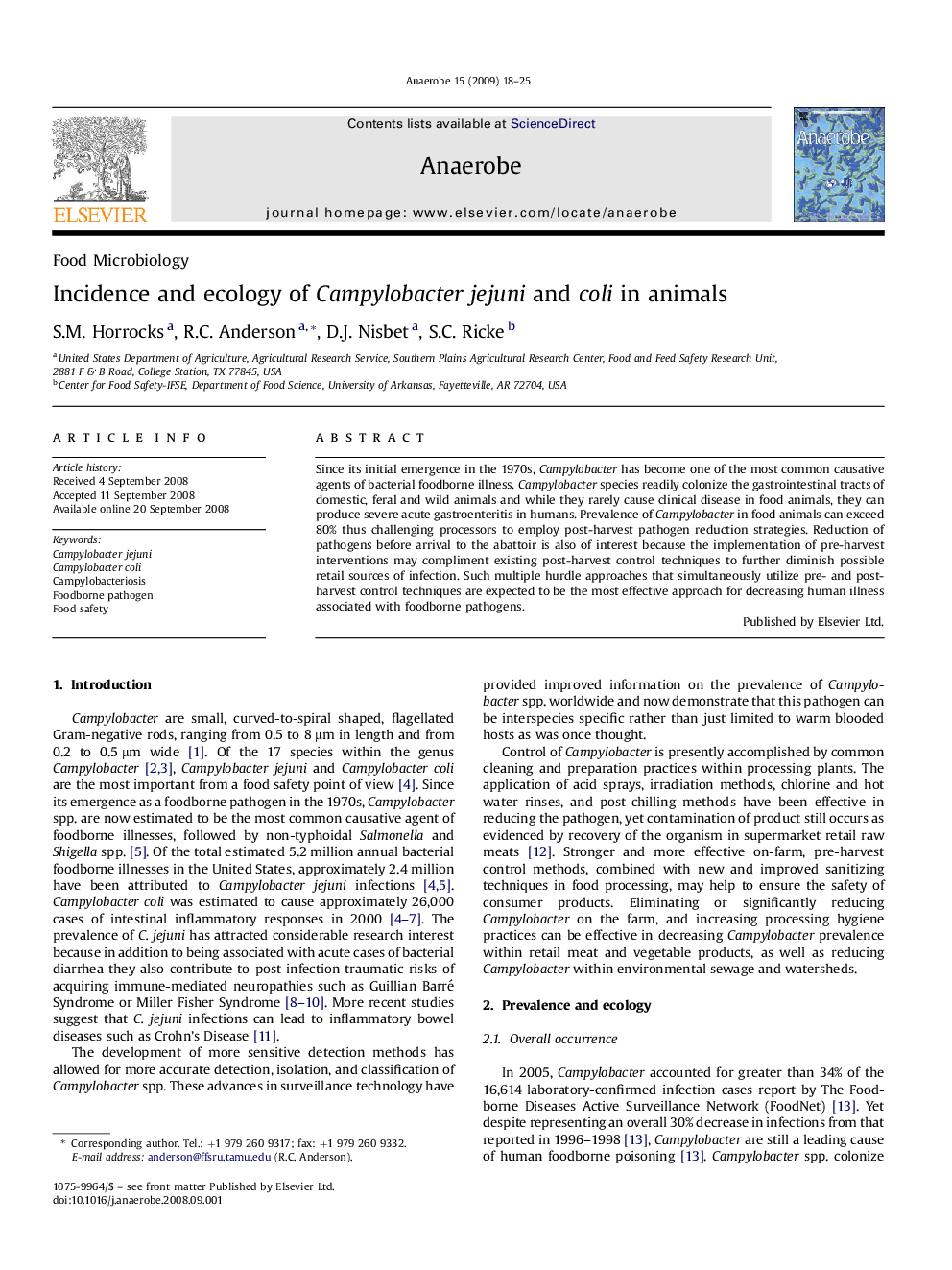| Article ID | Journal | Published Year | Pages | File Type |
|---|---|---|---|---|
| 3395835 | Anaerobe | 2009 | 8 Pages |
Since its initial emergence in the 1970s, Campylobacter has become one of the most common causative agents of bacterial foodborne illness. Campylobacter species readily colonize the gastrointestinal tracts of domestic, feral and wild animals and while they rarely cause clinical disease in food animals, they can produce severe acute gastroenteritis in humans. Prevalence of Campylobacter in food animals can exceed 80% thus challenging processors to employ post-harvest pathogen reduction strategies. Reduction of pathogens before arrival to the abattoir is also of interest because the implementation of pre-harvest interventions may compliment existing post-harvest control techniques to further diminish possible retail sources of infection. Such multiple hurdle approaches that simultaneously utilize pre- and post-harvest control techniques are expected to be the most effective approach for decreasing human illness associated with foodborne pathogens.
